Trending
Opinion: How will Project 2025 impact game developers?
The Heritage Foundation's manifesto for the possible next administration could do great harm to many, including large portions of the game development community.

Featured Blog | This community-written post highlights the best of what the game industry has to offer. Read more like it on the Game Developer Blogs or learn how to Submit Your Own Blog Post
Building on my previous blog post I discuss further on how to help mechanics grow, with using them in multiple ways to help players learn.
First post on: http://www.maxpears.com/category/blog/

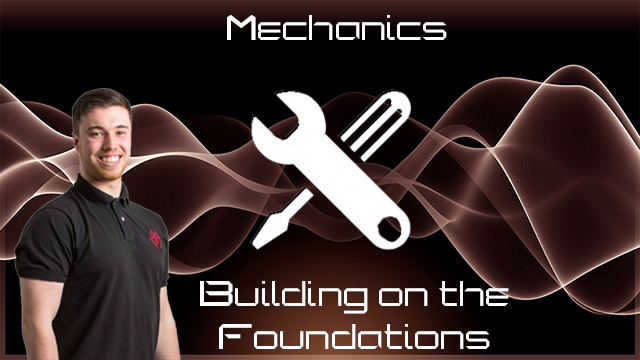
Hello my Design Enthusiasts,
I hope all is well and everyone is playing/making the games they love. The last blog post I discussed how when designing mechanics you should be designing them with the intention of bringing depth. Making sure you can use them in new and exciting ways.
After some thought, I decided it would be best to build on from the previous post (http://www.maxpears.com/2017/06/21/mechanics-depth-knows-best/) in this post I am going to be talking about how you can take a single mechanic then build on it in interesting ways with just some minor tweaks.
For the case of this blog, I am going to be using my own game ‘Chest Quest’ as well as others to help give a clear demonstration of how myself and other designers have done this. I hope you enjoy and see what can be achieved with just one mechanic.
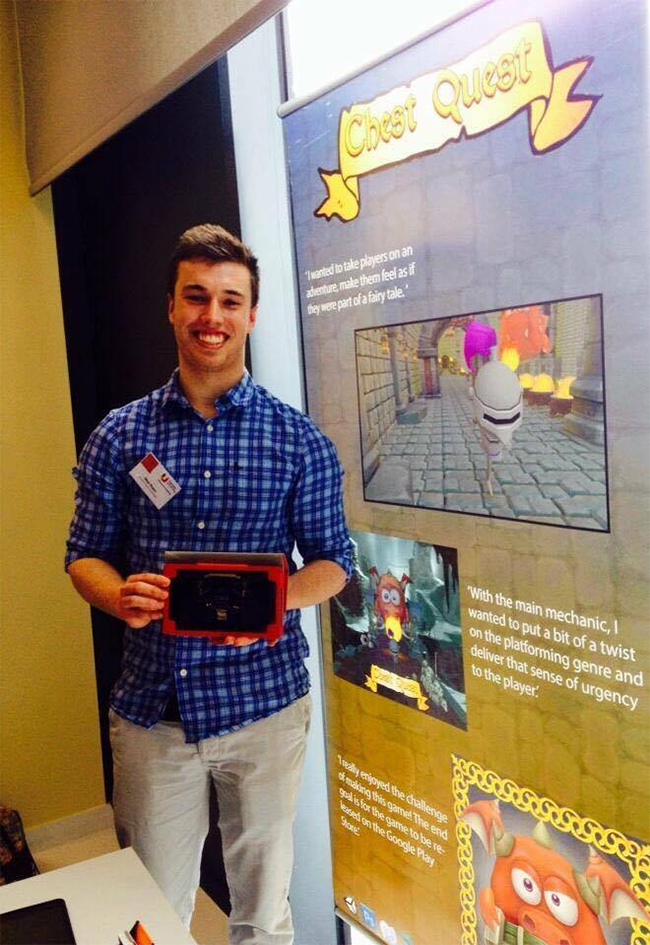
The Mechanic:
In the last blog post, I mentioned how I was working on a game called ‘Chest Quest’ which is platform runner for mobile devices. Like all platformers, it has a Jump mechanic. In Chest Quest players have the first 3 levels to learn, grow and master this mechanic. But you may be thinking about how I keep this challenge fresh and the interest within this one mechanic.
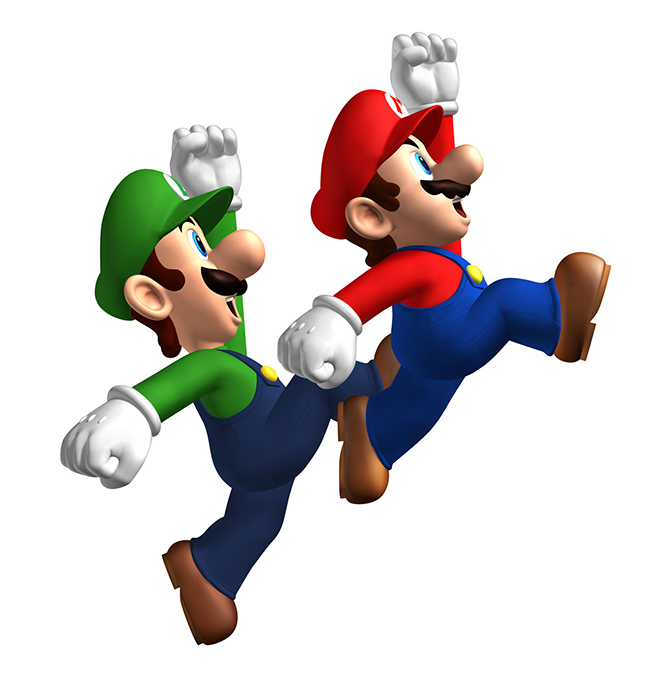
Before I state the ways, it is important to inform you of the rules of the game. The player is constantly moving to the right and has no control over the speed or direction of the movement. They can only control when to Jump or when to trigger the other mechanics. Now that you understand the rules, it is time to break down what ingredients I use to keep the mechanic interesting.
Variety of the Mechanic
Collectables:
One of the first things that I use as a rule of making the Jump fun, is the player has to use it to collect Gems. These are needed to get points to reach the high score.
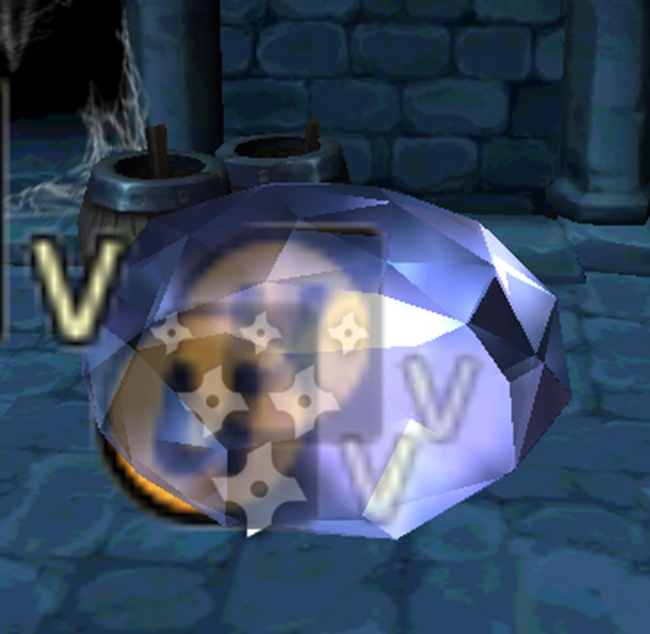
This way the player is always on the lookout for the gems. Players will have to collect all 5 gems in each level for the highest score, but to do this it will take skill to the Jump mechanic, as not all gems will be in plain site.
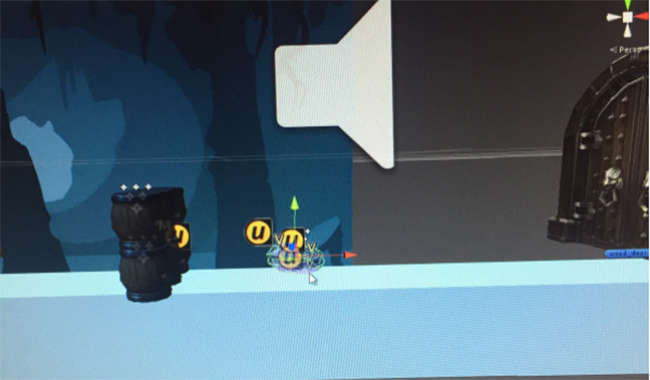
Players will have to master the jump arc to time the landing or the peak height to reach individual gem. Making an exciting micro-loop for the player. Now, this will not appeal to all players as not every player will be engaged with replaying a level to collect everything. Yet it keeps the jump interesting and adds a degree of mastery to it.
Obstacles:
The second way in which I keep the player interested is with Obstacles. These are what players must avoid so they do not lose health point or … die. This is where you will get the most use from your mechanic is within the obstacles. Just because they all fit in this category does not mean there arent differences within each obstacle.
Wooden Barrels - These are the first obstacles that are introduced to the player.
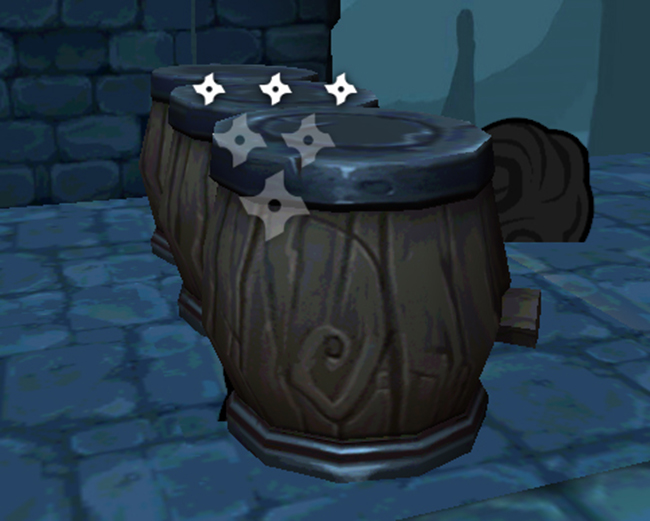
These are relatively harmless because of all the safe space available to the player, so even if a mistake it made chance is are, the player won't be in harm's way. The height and width are just 1m so players can clear this with ease, even if they jump early.
Players can also land on top of the barrels without taking any damage, giving the player a safety net in case they have made a mistake. If players do run into the barrel then they only lose one 1 HP of their 5. Meaning they have plenty of health to continue without the fear of dying anytime soon.
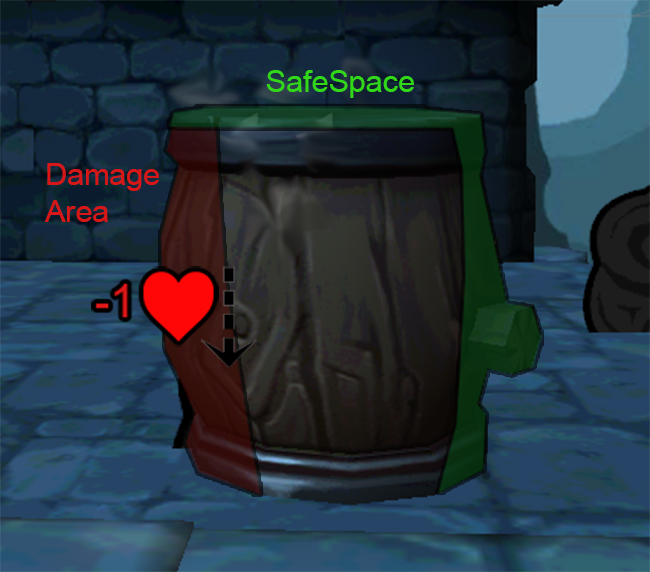
Firepit - Is the next obstacle that players encounter. This increases in difficulty from the barrel but only by a small amount.
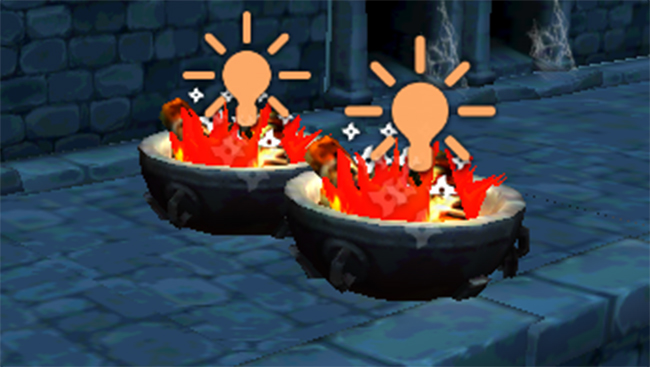 The height is smaller than the barrel but the length is 1.3m compared to that of the 1m Barrel. There is no safe spot when it comes to landing on the top of the firepit, so players can receive damage from the front but also the top of the object. Players lose the same out of health with 1 HP but the chance of receiving the damage has basically doubled. This increases the difficulty of the obstacle but not huge a spike in difficulty.
The height is smaller than the barrel but the length is 1.3m compared to that of the 1m Barrel. There is no safe spot when it comes to landing on the top of the firepit, so players can receive damage from the front but also the top of the object. Players lose the same out of health with 1 HP but the chance of receiving the damage has basically doubled. This increases the difficulty of the obstacle but not huge a spike in difficulty.
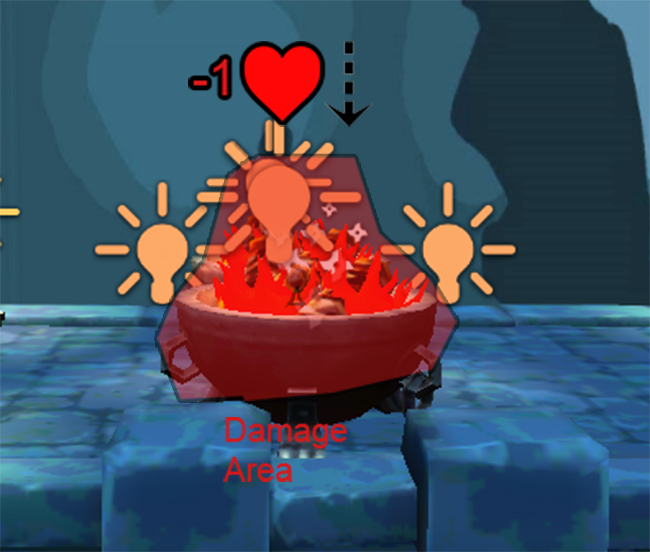 Orc - Are one of the living enemies within the game, it is also one of the few ‘Obstacles’ in the game which players can gain points for killing this obstacle.
Orc - Are one of the living enemies within the game, it is also one of the few ‘Obstacles’ in the game which players can gain points for killing this obstacle.
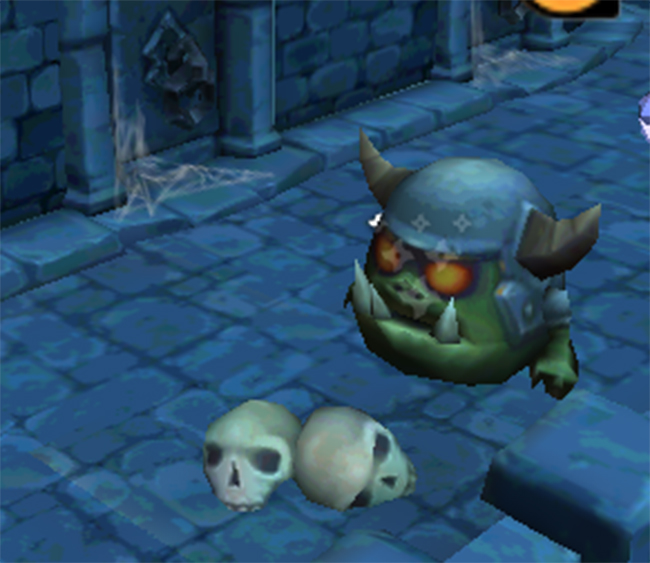
Orcs are an interesting character as they are not as static as the previous two obstacles. They do not move much only 0.03m (30cm) off the spot and then move back to their starting position. But this small movement is enough to trick the player into making the wrong move.
The one steps towards mastery of the Jump mechanic for the player is if they land on the orcs head then it kills the orc earning players bonus points. So players can choose to just ignore the orcs or time it to kill the orc earning more points.
Damage on the orcs is much higher than the previous obstacles and it is 2HP, so again does not kill the player but causes long-running issues. It is not an instant kill but adds to the risk-reward elements to the choice, as players almost lose half their health, yet could make bonus points for killing one.
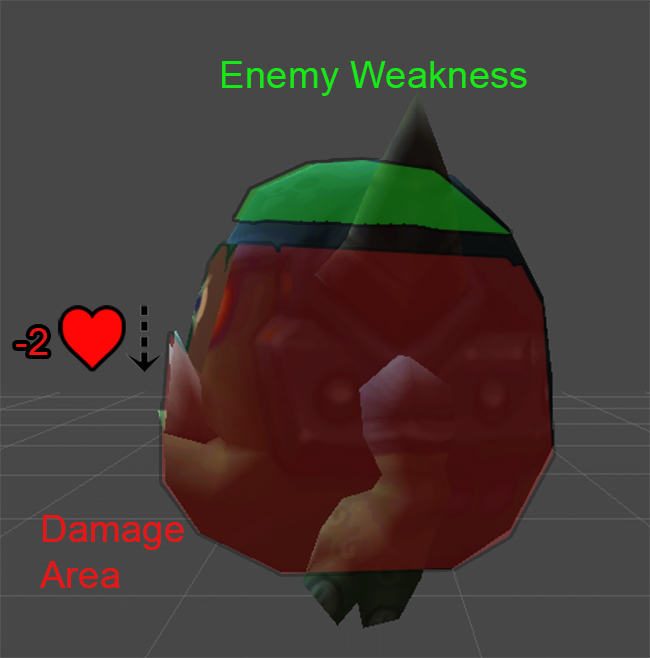
Shooting Spikes – Come out of the wall, heading directly towards the player.
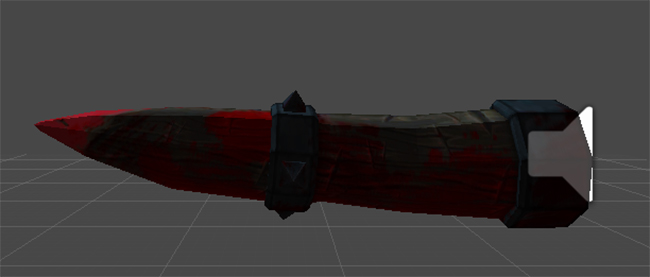
Shooting spikes are the lowest in terms of height but move in one direction, they do not stop till they hit something. These cause damage if they hit players from, the front, top or back. Players must completely clear these objects or they will take damage. For players to beat these obstacles they must manage the timing. With the fact that the player and spike are moving in opposite directions towards one another, it is mastery of timing that prevails here.
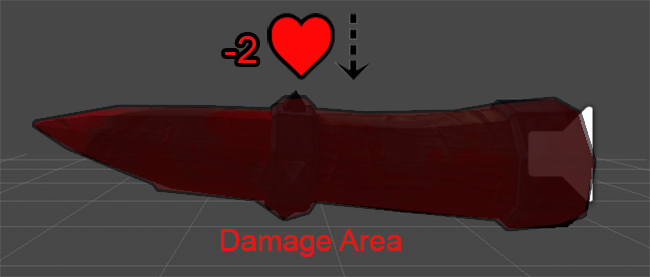
Pitfall – Is the most simple to grasp as all games have these within them.
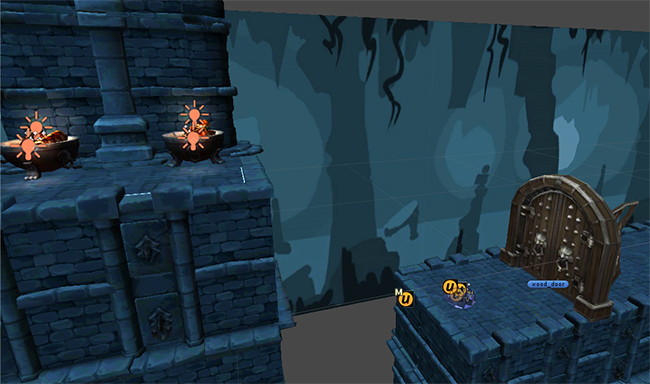
The pitfall is an ultimate fail option for players! There is a gap between platforms and players must jump across the gap. The gaps come in a number of ranges in size, some more challenging than the previous. These have the highest risk due to the fact that if players miss, it is game over!
So as you can see that each of these Obstacles is about being jumped over yet it is how the player jumps over them that keep this one mechanics fresh. The core principle is the same but these tiny adjustments from landing on the orc’s head for bonus points to the moving spike keep things exciting and engaging for the player.
These are the ways in which I keep the Jump mechanic engaging. Although the player uses the same mechanic, they must think about in how they use it with each new Obstacle. By adding in a small sense of mastery, with for example the Orc and how killing it gains extra points and the Gems position to obtain the high-score, it can keep players coming back for more, wanting to improve their skills.
Super MeatBoy:
My game is not the first game to do this by adding a twist on obstacles that is solved by the mechanic. In the film Indie Game the Movie one of the creators of Super MeatBoy Edmund McMillen talks about how he builds upon mechanics.
The player must first jump over these static buzzsaws.
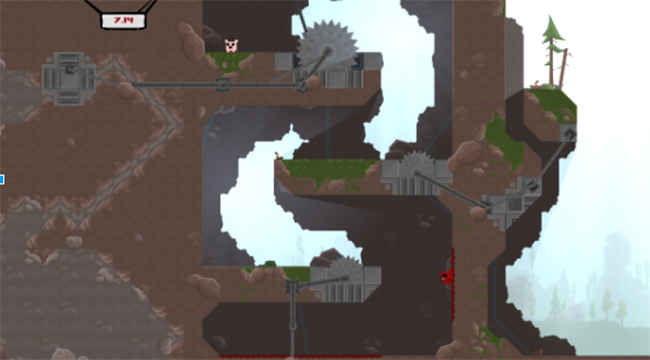
Once the player has mastered this, they will then will face moving buzzsaws! Which move along the X-axis, which teaches players to jump with timing.
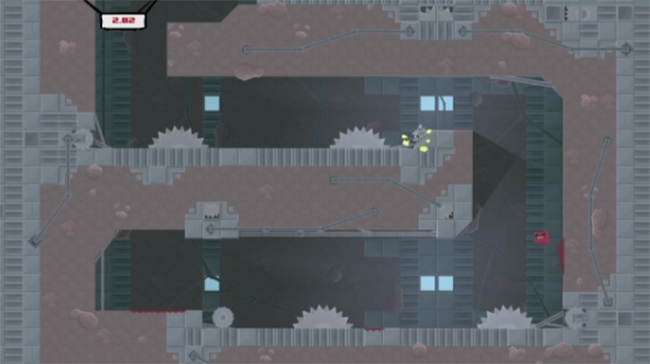
The final form of the buzzsaws is ones which are attached to robotic arms which spin 360 degrees which again is about jumping with timing but making that decision is much more a split second reaction time than the previous two.
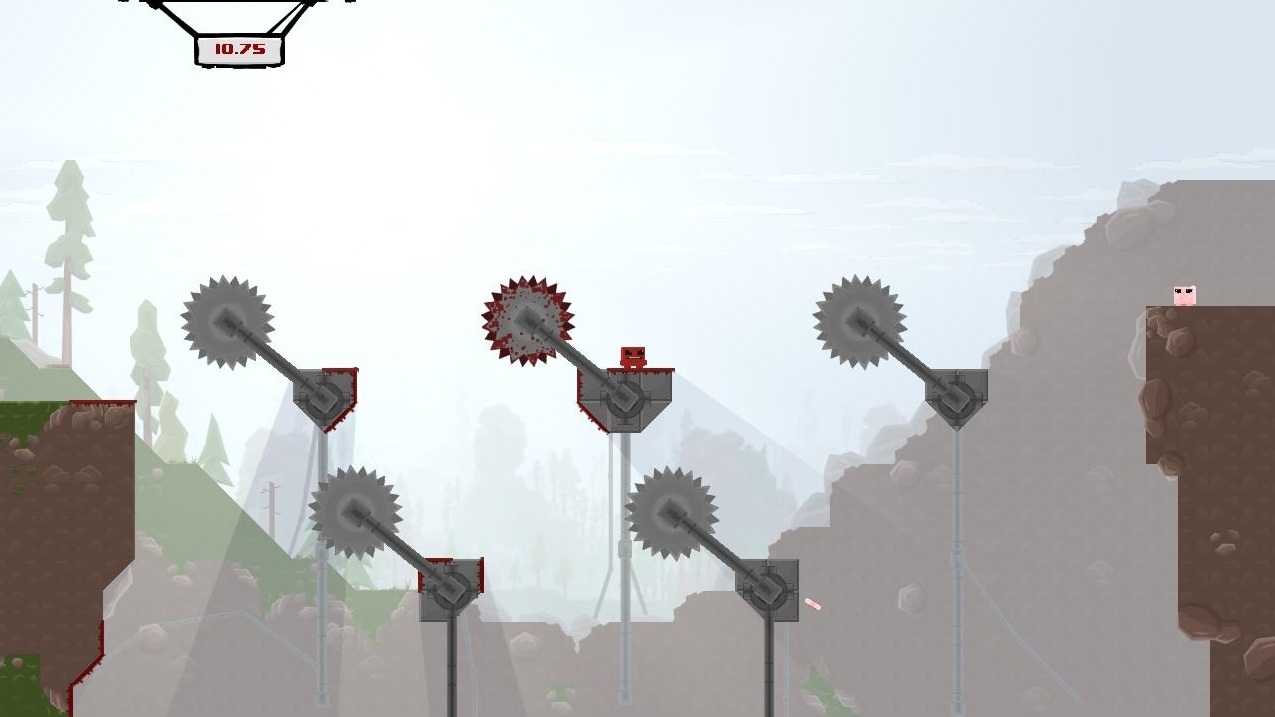
Super MeatBoy may be a different game to Chest Quest but the principles are the same. It does not have one obstacle for players to jump, it builds upon these adding new challenges/twists for players to use their Jump. Look at your favourite games of any genre and focus on one of their mechanics. You will quickly see how they build upon it with different tactics as well.
Take inspiration from these, study games you have played, see how they make a difference to just one mechanic by having multiple variations. Then apply your depth to your own mechanic to take full advantage of what you have.
Combining Mechanics:
I mentioned in my previous post about combining mechanics, thinking about how your mechanics work together opens up new opportunities as well as challenges for the player. In Chest Quest I have another mechanic called Charge and in the later levels I layout challenges for the players in which they will have to combine them to progress.
Later I will do a more in-depth blog on combining mechanics/systemic design. Just touching on this so it gets the brain thinking.
Conclusion:
With all of these examples, I hope that you are able to see that there is plenty of ways to develop your mechanic, and how you should always try to think of this. Another key point on this I want to make is to add the element of mastery to your mechanic. I do not mean for all mechanics but for some.
In Chest Quest anyone can jump that is easy and I want this to be like this, but killing the orcs and collecting all the gems. Now, this takes skill, this will sometimes take practice. Think for some of your mechanics how do skilled players benefit from taking the time to truly learn your mechanic?
Hope this has been helpful for you all, if you have any questions or points to raise please hit me up on Twitter: @MaxPears
If you like my blogs and want to be kept up to date then please subscribe at http://www.maxpears.com/2017/06/29/mechanics-building-on-the-foundation/
Read more about:
Featured BlogsYou May Also Like